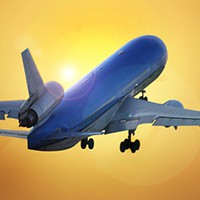Last updated: November 20 2018
Essential Tax Tips for Snowbirds

Many Canadian snowbirds have already headed south for the winter, and recent retirees making this a part of their lifestyle for the first time should be diligent in understanding the tax rules that affect them before year-end.
Dean Smith of Cadesky Tax, Knowledge Bureau Faculty member and one of Canada’s foremost experts on Canada-U.S. tax matters, weighs in on the things snowbirds and their advisors need to know now. He touched on the issues at DAC last week, and will be providing further insight at the May CE Summits, which aim to provide tax and financial advisors with post-budget action strategies.
Snowbirds: Do You Have to File a U.S. Return? The determination of one’s U.S. residence status is fact-based. You become a U.S. resident, under U.S. tax law, if you obtain lawful permanent resident status (“green card”) or you spend a significant amount of time in the U.S., such that you meet the “substantial presence test.” In these cases, you are a resident for tax purposes.
significant amount of time in the U.S., such that you meet the “substantial presence test.” In these cases, you are a resident for tax purposes.
What Is the Substantial Presence Test? Under the substantial presence test, an individual is considered a U.S. (tax) resident if the number of days in the U.S., calculated by its formula, exceeds 183. First, however, the individual must have at least 31 days of physical presence in the current year. If that condition is met, the number of days can then be computed as follows:
The number of days in the current year + (the number of days in the first prior year x 1/3) + (the number of days in the second prior year x 1/6)
In general, for the purpose of any U.S. days-counting test, any part of a day counts as a day. So, for example, if an individual crosses into the U.S., say into Buffalo via the Peace Bridge, at 11:50 PM, they will have one day of physical presence.
On average, to remain under the threshold, the number of days spent in the U.S. is approximately 120. We can see as follows:
120 + (120/3) + (120/6) = 180 < 183
Certain days and individuals are excluded from the test. Such individuals would include those related to a foreign government (i.e., those in the U.S. on a diplomatic status or visa), teachers or trainees, students and some professional athletes (competing in a charitable event). Excluded days would be for commuters, days in transit between two foreign points, crew members temporarily present in the U.S., and for days spent in the U.S. due to certain medical conditions that arose while there.
For snowbirds, however, these exceptions should not apply, meaning that all days of presence are counted. To check on your previous travel dates across the border, consider checking the I-94 website, which provides a record of an individual’s entry and departure dates in the U.S.
Next time: Snowbirds who don’t meet the substantial presence test
Dean Smith, PhD, CFP, TEP, CPA, CA, is a partner with Cadesky and Associates LLP and the President of Cadesky U.S. Tax Ltd. Cadesky is a boutique accounting firm that provides only taxation services. Dean has been involved with expatriate tax work for over 23 years, assisting companies moving employees around the world. Clients also include private individuals who have multiple jurisdictional filings. Dean is also an instructor and writer with Knowledge Bureau.
Additional educational resources: If you’re working with Canadian snowbirds who spend time in the U.S., you’ll want to ensure your technical tax and financial planning skills are up to date with Knowledge Bureau’s Cross Border Taxation certificate course. You also can’t miss joining us in another Canadian retirement haven – Puerto Vallarta — for the 2019 Distinguished Advisor Conference (DAC) where this will be a theme.
COPYRIGHT OWNED BY KNOWLEDGE BUREAU INC., 2018.
UNAUTHORIZED REPRODUCTION, IN WHOLE OR IN PART, IS PROHIBITED.





